Abstract
We evaluated the authorship of messages produced through facilitated communication by 7 adults with moderate or severe mental retardation and their facilitators. The clients had been reported to be communicating fluently through facilitated communication. We controlled the facilitators' access to information to be communicated in two evaluation formats, naming pictures and describing activities. In both formats we conducted three conditions: (a) the facilitator and client had access to the same information, (b) the facilitator did not have access to the picture or activity, and (c) the facilitator was given false information about the picture or activity. The results showed that the clients typed the correct answer only when the facilitator had access to the same information, never typed the correct answer when the facilitator had no information or false information, and typed the picture or activity presented to the facilitator when it was different from the one experienced by the client. These results provide unequivocal evidence for facilitator control of typing during facilitated communication.
Full text
PDF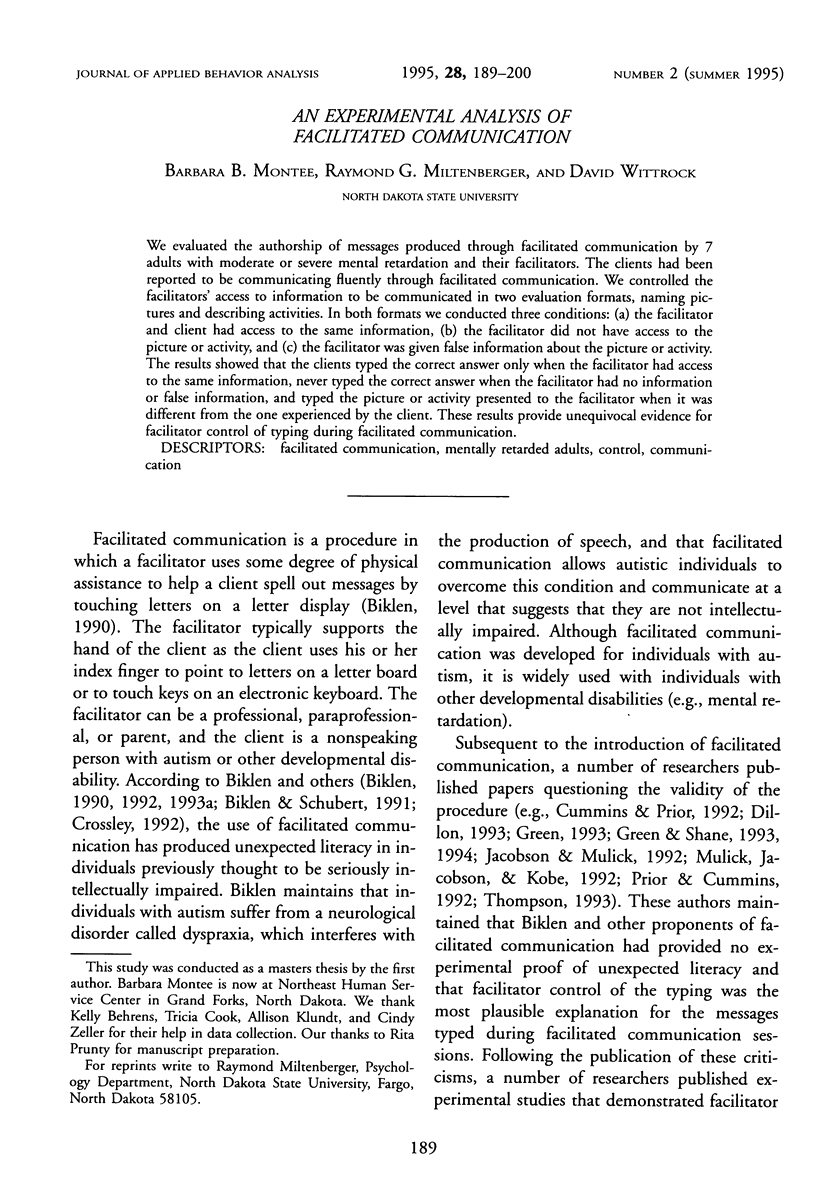

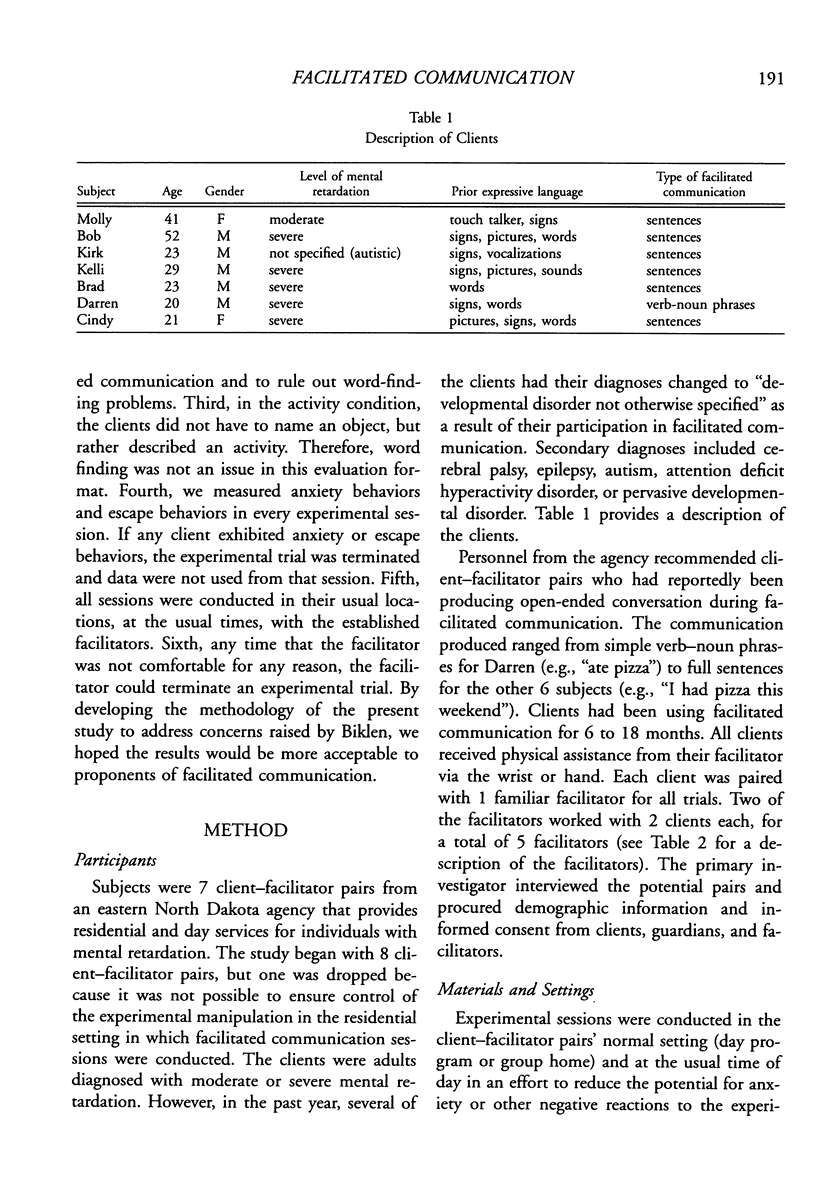
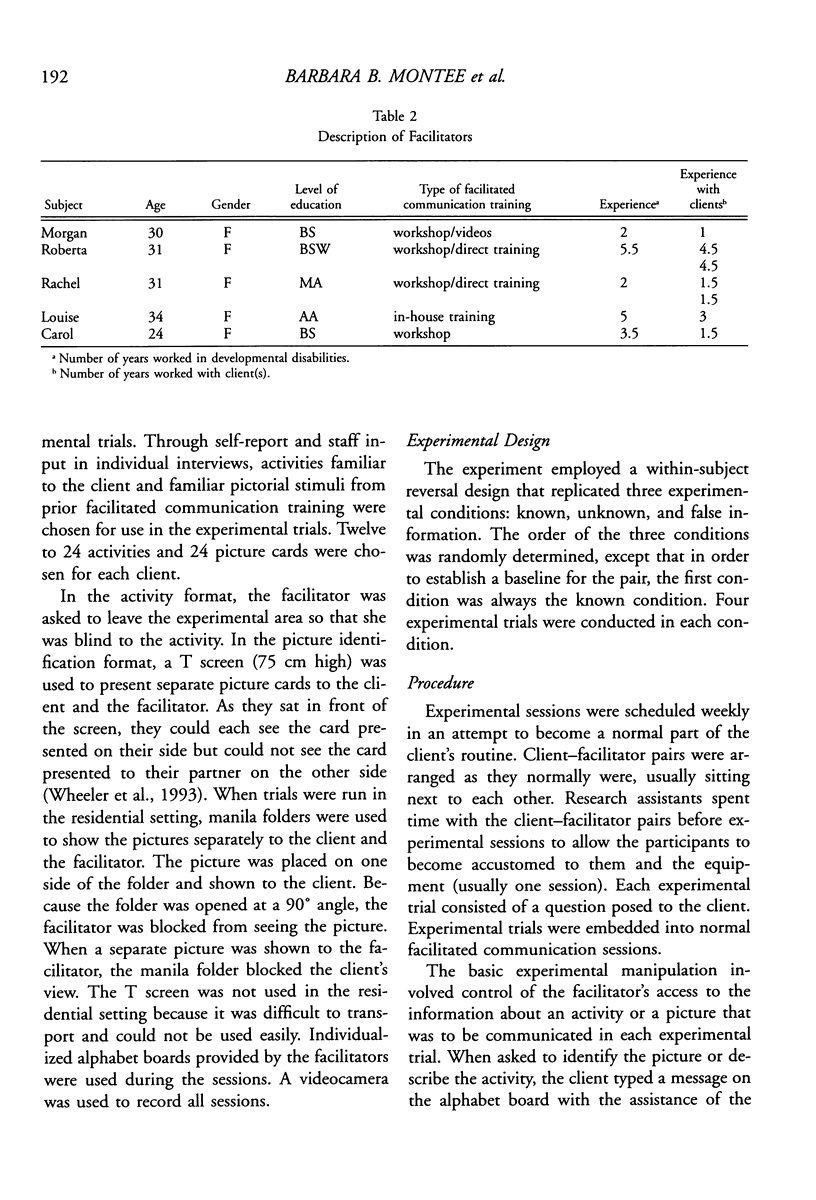
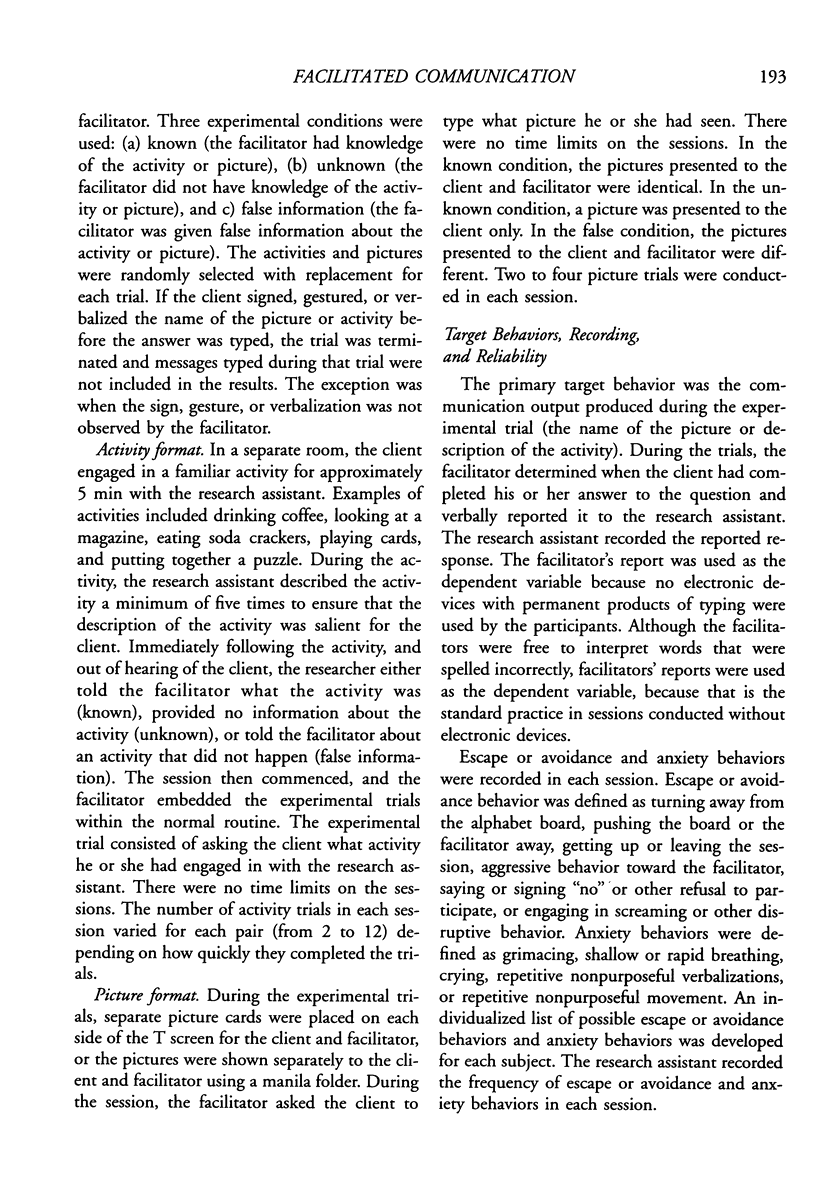
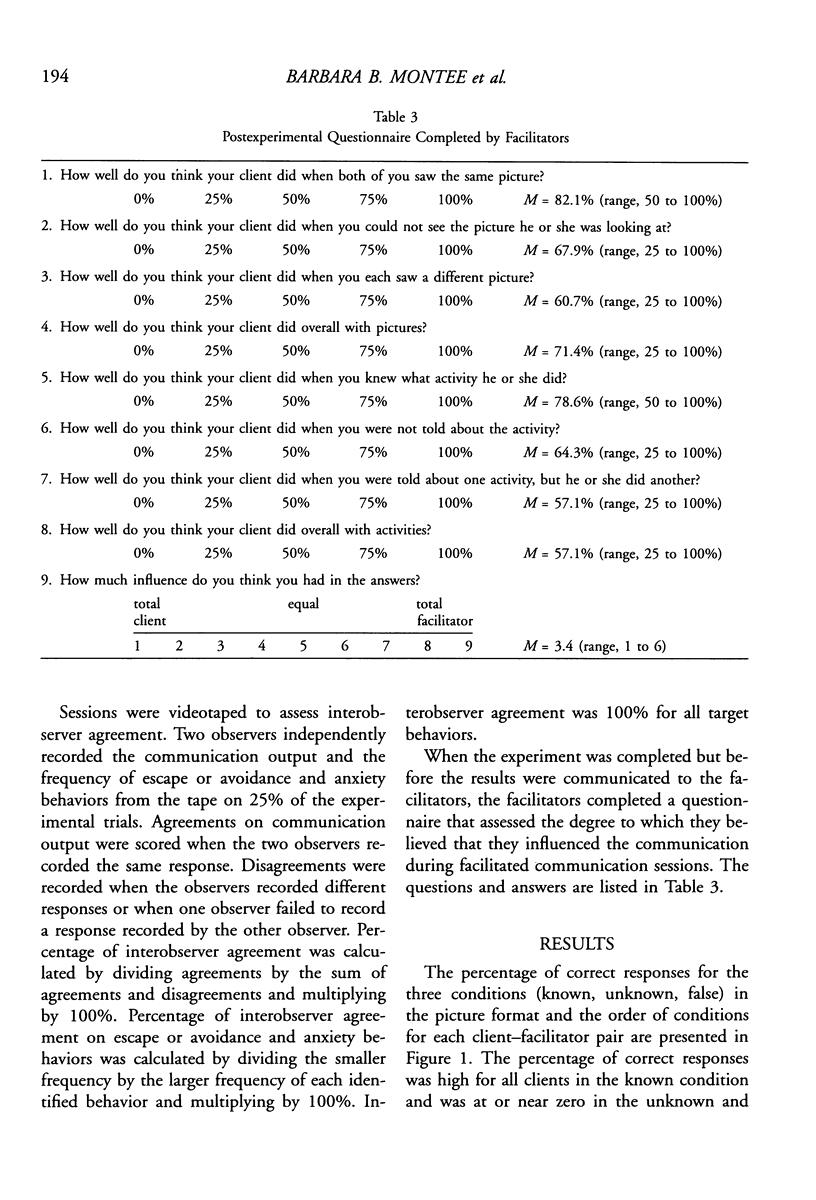
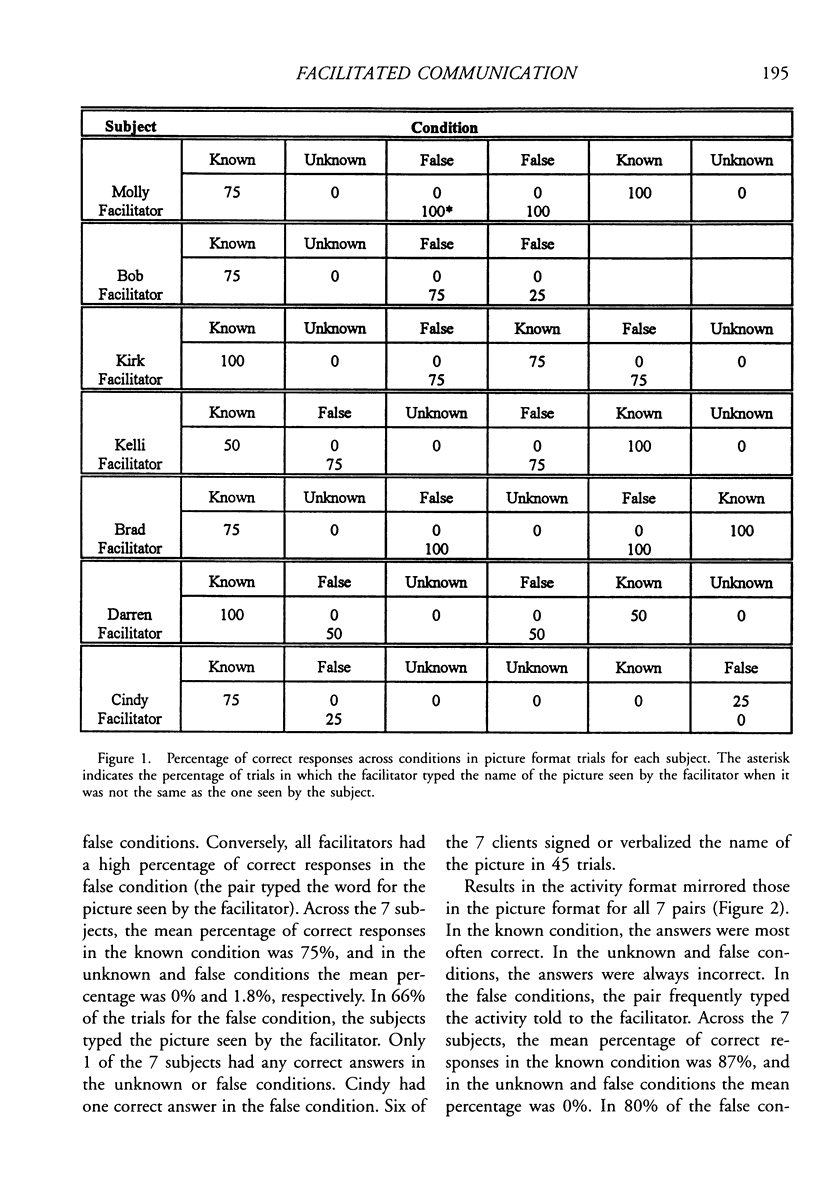
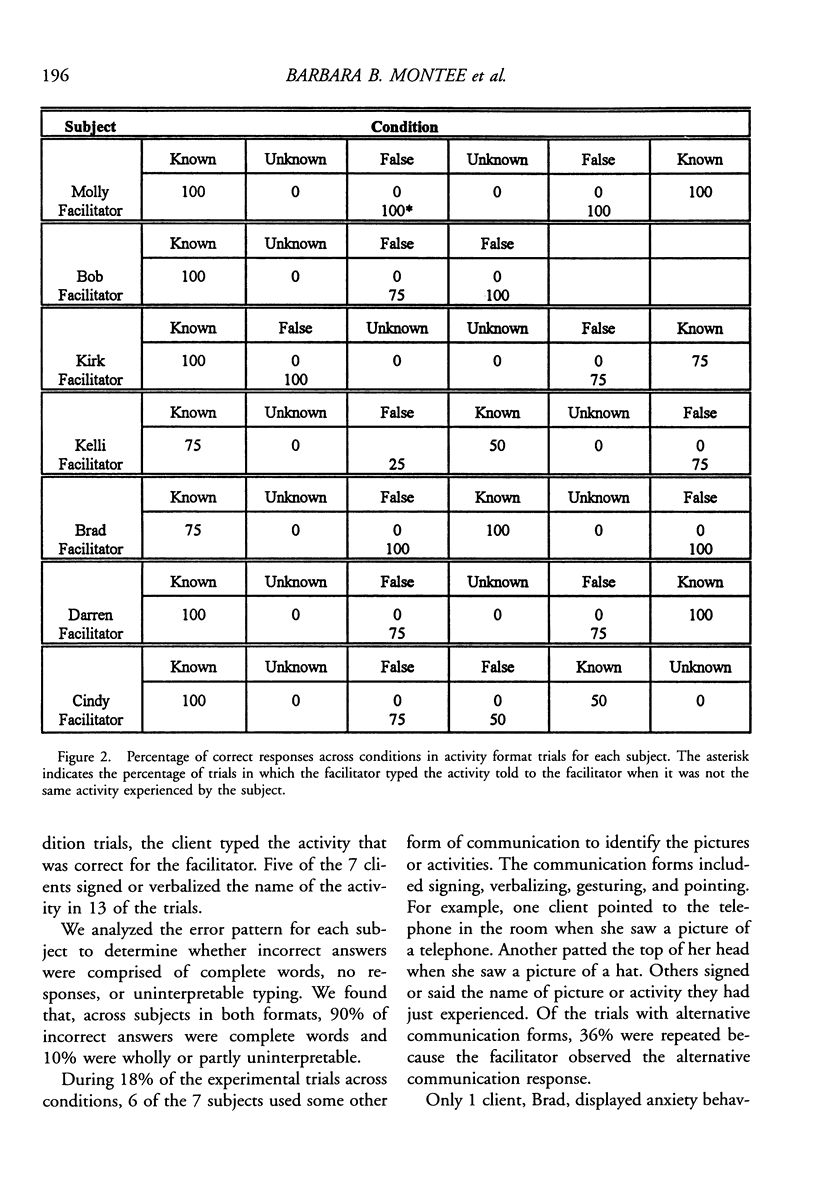
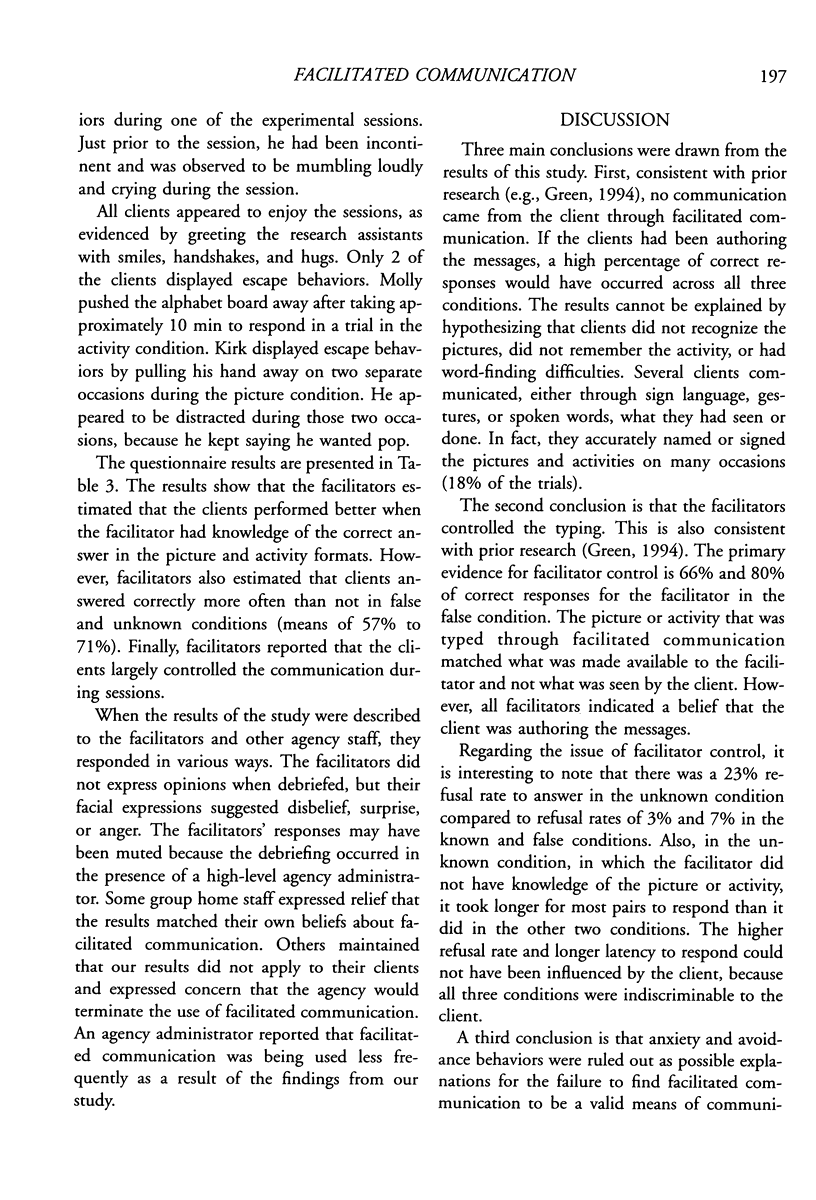
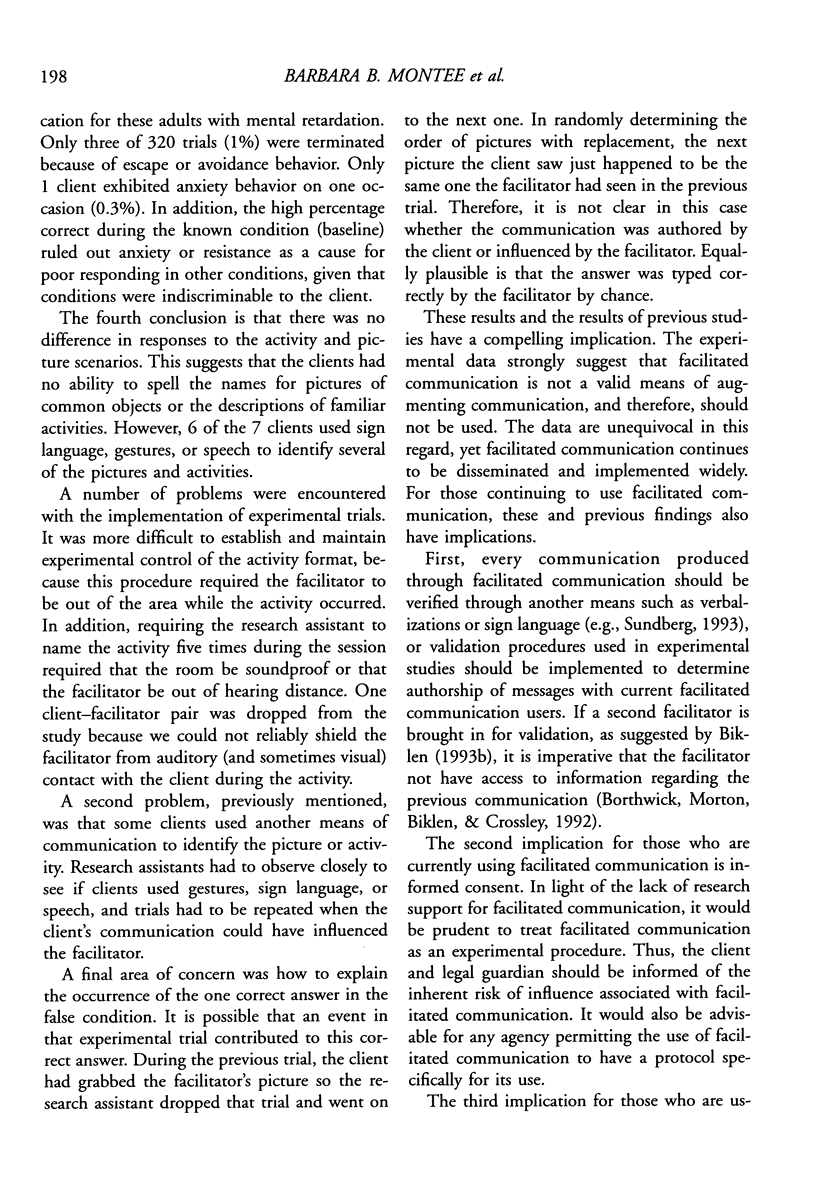
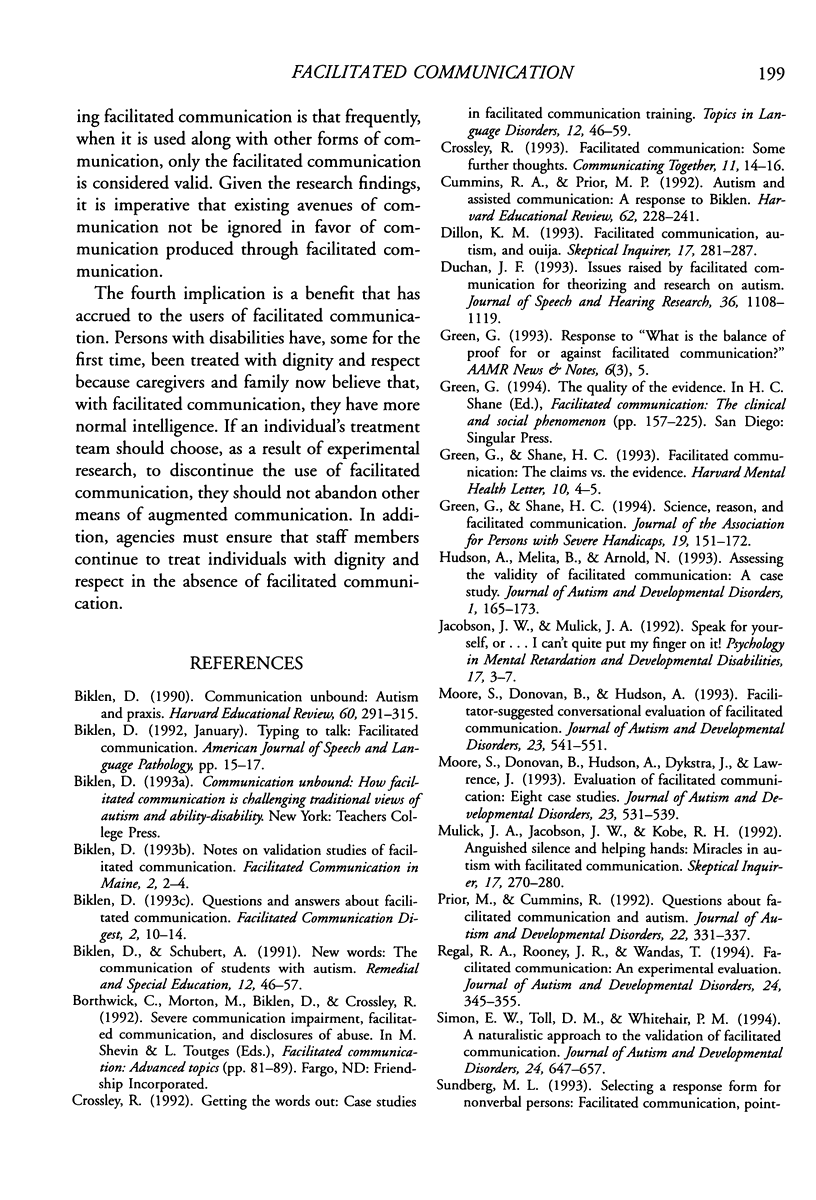
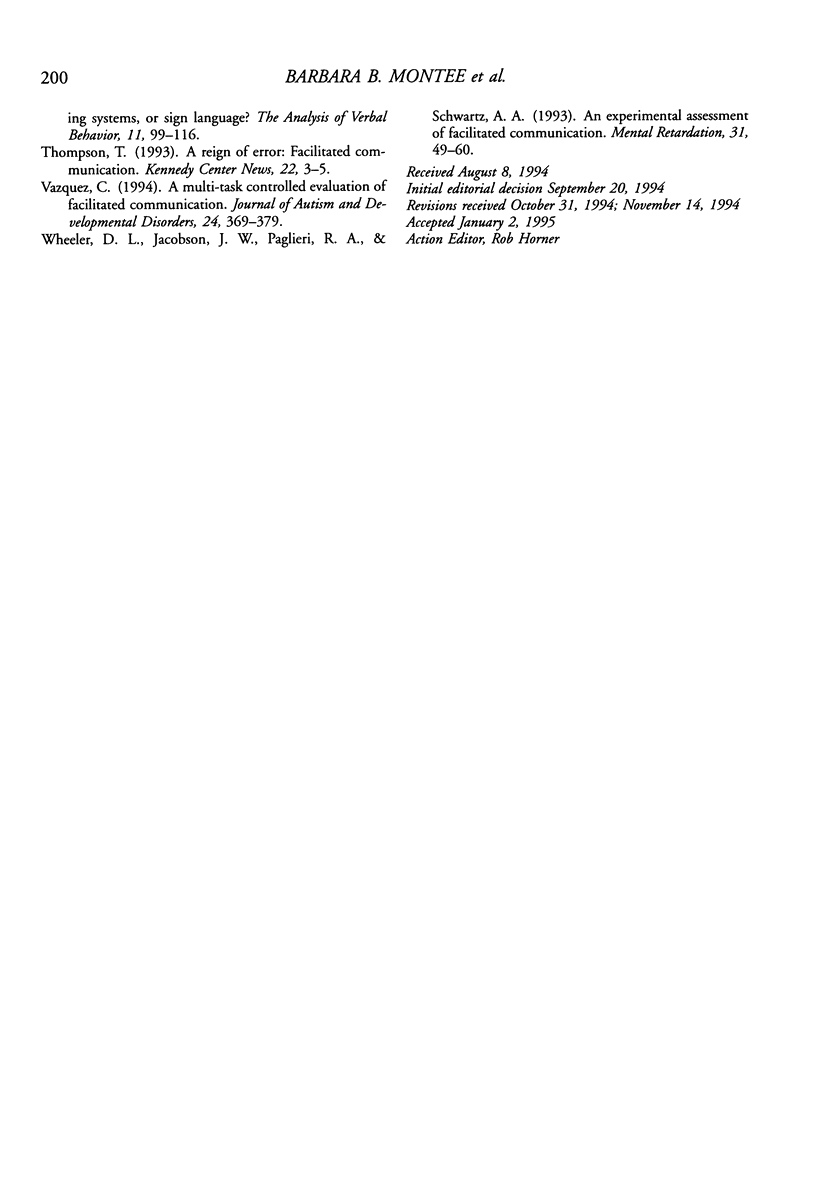
Selected References
These references are in PubMed. This may not be the complete list of references from this article.
- Duchan J. F. Issues raised by facilitated communication for theorizing and research on autism. J Speech Hear Res. 1993 Dec;36(6):1108–1119. doi: 10.1044/jshr.3606.1108. [DOI] [PubMed] [Google Scholar]
- Hudson A., Melita B., Arnold N. Brief report: a case study assessing the validity of facilitated communication. J Autism Dev Disord. 1993 Mar;23(1):165–173. doi: 10.1007/BF01066425. [DOI] [PubMed] [Google Scholar]
- Moore S., Donovan B., Hudson A. Brief report: facilitator-suggested conversational evaluation of facilitated communication. J Autism Dev Disord. 1993 Sep;23(3):541–552. doi: 10.1007/BF01046055. [DOI] [PubMed] [Google Scholar]
- Moore S., Donovan B., Hudson A., Dykstra J., Lawrence J. Brief report: evaluation of eight case studies of facilitated communication. J Autism Dev Disord. 1993 Sep;23(3):531–539. doi: 10.1007/BF01046054. [DOI] [PubMed] [Google Scholar]
- Prior M., Cummins R. Questions about facilitated communication and autism. J Autism Dev Disord. 1992 Sep;22(3):331–338. doi: 10.1007/BF01048237. [DOI] [PubMed] [Google Scholar]
- Regal R. A., Rooney J. R., Wandas T. Facilitated communication: an experimental evaluation. J Autism Dev Disord. 1994 Jun;24(3):345–355. doi: 10.1007/BF02172232. [DOI] [PubMed] [Google Scholar]
- Simon E. W., Toll D. M., Whitehair P. M. A naturalistic approach to the validation of facilitated communication. J Autism Dev Disord. 1994 Oct;24(5):647–657. doi: 10.1007/BF02172144. [DOI] [PubMed] [Google Scholar]
- Vázquez C. A. Brief report: a multitask controlled evaluation of facilitated communication. J Autism Dev Disord. 1994 Jun;24(3):369–379. doi: 10.1007/BF02172234. [DOI] [PubMed] [Google Scholar]
- Wheeler D. L., Jacobson J. W., Paglieri R. A., Schwartz A. A. An experimental assessment of facilitated communication. Ment Retard. 1993 Feb;31(1):49–59. [PubMed] [Google Scholar]


